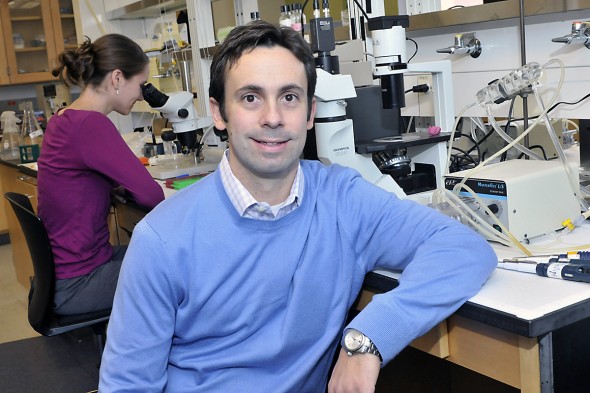Binge drinking may put young people at risk for heart disease
Repeated weekend binge drinking in healthy young adults causes changes in blood flow in the arm suggesting an increased risk for cardiovascular disease, according to a study by researchers at the University of Illinois at Chicago.
Their findings were reported in the April 23 issue of the Journal of the American College of Cardiology.
Young men and women with a history of binge drinking showed changes in blood flow in response to stress in large and small blood vessels leading to their hearts. These changes were similar to those seen in people with heart disease or with risk factors such as high cholesterol.
“Even though these individuals are young and healthy and don’t have any other overt cardiovascular signs of disease, these data would suggest that maybe they are on the road to developing problems,” said Shane Phillips, associate professor of physical therapy at UIC and lead author on the study.
The researchers compared 19 men and women ages 18-25 with a history of binge drinking with 17 young adults who had abstained from drinking for the past year. They found the drinkers had a reduction in the ability of the main artery of the upper arm to respond to stress-induced increased blood flow by widening, as compared to their non-drinking peers. The same reduced reaction was seen when nitroglycerin was used to induce dilation of these large blood vessels.
The brachial artery response is an early indicator of changes in cardiovascular health, and its impairment is thought to predict early cardiovascular disease, Phillips said.
In the small blood vessels, Phillips said the researchers found that the binge-drinking group had fairly typical widening of the blood vessels to allow more blood flow.
“But the mechanisms tended to be different than what we found in the abstainers,” said Phillips. “And this is similar to what we find in some of our diseased populations with more overt cardiovascular disease — that maybe there is a compensatory mechanism in the small blood vessels that has developed due to the drinking.”
Binge drinking was defined as consuming five or more standard alcoholic drinks within two hours for men, and four or more standard drinks within two hours for women.
The binge drinkers averaged four years of binge-drinking behavior and had an average of six binge-drinking episodes within the past month.
“We don’t know exactly what the long-term risks of binge drinking may be,” said Phillips. “But our data suggests that this pattern over a long term might increase cardiovascular risk in someone who doesn’t have a cardiovascular disease.”
Phillips and his colleagues are interested in further research to compare binge drinkers to individuals with more moderate patterns of drinking.
Melissa Goslawski, who received her master’s in rehabilitation sciences at UIC last year, was first author on the study. Mariann Piano, Jing-Tan Bian, Emily Church and Mary Szczurek of UIC also contributed to the study.
This study was supported by NIH grants AA015578, HL85614, HL095701 and HL095701-02S1; UIC’s Center for Clinical and Translational Science National Center for Research Resources award UL1RR029879.

